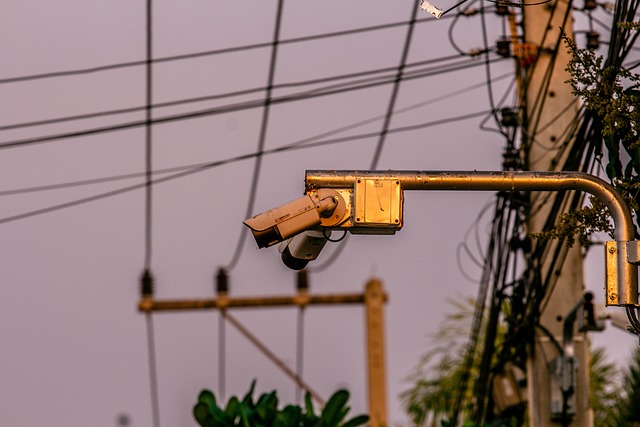The DMV vehicle verification process is an essential step for registering a car, which includes a VIN Inspection to ensure the vehicle's details align with ownership records and prevent fraud. Owners must present their vehicle title, proof of insurance, and valid photo ID, and locate an authorized DMV VIN inspection location to verify the VIN on the dashboard, engine, and chassis against state records. The process is detailed and requires careful documentation and understanding of DMV VIN inspection requirements, which can vary by state and vehicle type. Preparation includes knowing the associated costs for a VIN verification, which are subject to regional differences and vehicle types. Once the VIN number is confirmed authentic at a DMV VIN inspection location, the vehicle can proceed to the DMV registration inspection. This thorough process not only streamlines registration but also maintains the integrity of automotive records by ensuring each registered vehicle is legally accounted for. Utilizing DMV VIN inspection locations and adhering to DMV VIN check requirements are key to navigating this administrative procedure efficiently.
navigating the DMV’s VIN verification process is a critical step for vehicle owners, whether they’re new to the state or simply updating their registration. This article demystifies the VIN Inspection requirements and guides you through each step of the DMV vehicle verification process with ease. From understanding what documents are needed and how much it costs, to locating your nearest DMV VIN inspection site and grasping the check requirements, we’ve got you covered. Ensure a smooth registration by familiarizing yourself with the VIN number verification protocols set forth by the DMV. Let’s streamline your experience with a comprehensive overview of the DMV VIN inspection locations and the VIN verification process necessary for accurate and lawful vehicle documentation.
- Understanding the DMV VIN Verification Process: A Step-by-Step Guide
- Preparing for Your VIN Number Verification: Required Documents and Costs
- Locating DMV VIN Inspection Sites and Navigating the Check Requirements
Understanding the DMV VIN Verification Process: A Step-by-Step Guide
When navigating the DMV vehicle verification process, understanding each step is crucial for a smooth and efficient experience. The VIN Inspection, or Vehicle Identification Number check, is a fundamental aspect of the registration process, ensuring that your vehicle’s details align with state records to prevent fraudulent activity and maintain accurate registration information. The process begins with gathering all necessary documents, which typically include the vehicle title, proof of insurance, and a valid photo ID. Once you have these documents ready, locate the nearest DMV VIN inspection site from the DMV VIN inspection locations available in your area. These sites are equipped to perform the VIN number verification process, which involves checking the VIN against the vehicle’s title and registration records. During this VIN verification process, a DMV official will examine the VIN on your vehicle’s dashboard, as well as other components like the engine and chassis, to ensure that they match the VIN number provided. This thorough inspection is part of the DMV VIN check requirements designed to safeguard against title fraud and ensure that the vehicle you are registering has not been reported stolen or has not been involved in significant damage or branded with a salvage title. After successful verification, you can proceed with the DMV registration inspection, which will conclude with your vehicle’s registration being processed and approved. Knowing the steps beforehand and preparing all required documents will make the DMV vehicle verification process less daunting and more manageable. Remember to adhere to the DMV VIN check requirements at each step to avoid any delays or complications during the registration process.
Preparing for Your VIN Number Verification: Required Documents and Costs
When preparing for your VIN number verification at the DMV, it’s crucial to have all the necessary documents and understanding of the associated costs. To initiate the DMV vehicle verification process, you will need to provide your current registration, a valid driver’s license or state-issued ID, and proof of insurance. Additionally, the vehicle in question must have its VIN clearly visible for inspection. The VIN inspection is a critical step in the DMV vehicle verification process, as it ensures that the VIN number matches the one on your paperwork, preventing fraud and ensuring accurate registration. This inspection can be conducted at any designated DMV VIN inspection location, which includes various licensed mechanics and auto dealers throughout the state. It’s important to note the varying costs for a DMV VIN check; these expenses cover the service provided by the inspector and may differ based on your region or the type of vehicle you own. Before visiting a DMV VIN inspection location, ensure you have the correct DMV registration inspection requirements in hand, as these can vary depending on the state and the specific vehicle you are registering. By being well-prepared with all the required documents and understanding the costs involved, you can make the DMV VIN number verification process as smooth and hassle-free as possible.
Locating DMV VIN Inspection Sites and Navigating the Check Requirements
When navigating the DMV vehicle verification process, locating a VIN Inspection site is your first step. The Department of Motor Vehicles (DMV) requires that each vehicle undergo a VIN number verification to ensure its authenticity and compliance with state registration requirements. To find an authorized VIN inspection location, you can start by visiting the official DMV website for your state. These sites are equipped to perform the VIN verification process and will provide an official report confirming your vehicle’s details. This report is crucial as it serves as a cornerstone in the DMV registration inspection, verifying that your VIN matches the records and that the vehicle has not been reported stolen or significantly altered in a way that affects its identity.
Once you’ve identified a DMV VIN inspection location near you, gather all necessary documents, including your vehicle’s title, proof of insurance, and any other required paperwork specific to your state’s registration check requirements. The VIN verification process is standardized but may vary slightly depending on the jurisdiction. Typically, the inspector will examine the VIN on your vehicle’s key components, such as the dashboard, engine block, and vehicle frame, to ensure they match the numbers reported on your documentation. After passing the DMV VIN check requirements, you can proceed with confidence to complete your registration, confident that you have fulfilled all necessary verification steps. This process not only streamlines your registration but also helps maintain the integrity of the automotive record by preventing fraud and ensuring every vehicle on the road is properly accounted for and legally registered.
When navigating the DMV vehicle verification process, understanding each step of the VIN Inspection is key to a smooth and efficient experience. This article has demystified the VIN number verification procedure, guiding you through the necessary documents, costs, and DMV VIN inspection locations. By following the outlined steps for the DMV VIN check requirements, you can ensure your vehicle’s registration is accurate and fraud-proof. Remember, a thorough DMV registration inspection is not just a formality; it’s an integral part of vehicle ownership that protects both your interests and those of the public. With this knowledge at hand, you’re now equipped to approach the DMV with confidence, ready to complete your VIN verification process without unnecessary complications.



